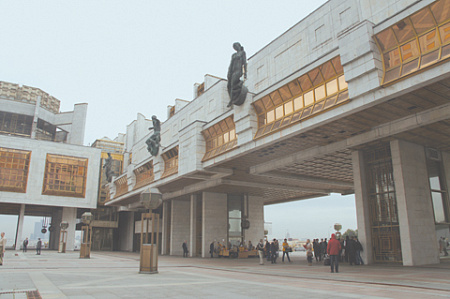
The year is 2025. The next elections in the Russian Academy of Sciences. And, to the surprise of many, another serious unrest among the Russian academic community. Of course, a significant number of scientists in the Russian Federation still dream of becoming members (correspondents and academicians) of the Russian Academy of Sciences. And this dream, of course, is not dictated by a mercantile interest.
Its existence reflects the fact that the Russian Academy of Sciences, even after losing the reins of Russian science, remained almost the only large Soviet-style island in modern Russia. When almost every researcher considers it an important career step, if not an honorable one, to become a member of the Russian Academy of Sciences. Just as in the Soviet Union, almost every citizen considered joining the CPSU to be a similar event.
Accordingly, the semantic structure of the characteristics of applicants for membership in the Russian Academy of Sciences is set by the syllable of a key work of Soviet literature, the following excerpt from which every student of the Soviet school learned by heart: “The most precious thing for a person is life. It is given to him once, and he must live it in such a way that it does not excruciatingly hurt for the aimlessly lived years, so that he does not burn the shame of a mean and petty past, and so that, dying, he can say: his whole life and all his strength are devoted to the most important thing in the world – the struggle for the liberation of mankind.”
However, almost a century has passed since these lines appeared, and the rhetoric of academic speeches during the election period in the EARLY 21st century is infinitely far from the fabulous heights of the speeches of the heroes of the “Stakhanov movement” and the “great five-year plans”, as well as those who created the atomic bomb, the first to explore space… and he was smashing up genetics and cybernetics. They have acquired an exclusively, if I may say so, industrial character, but the seal of the great Soviet style, albeit utilitarian, is visible to the naked eye. It is enough to be patient and run through the “help-annotations” for candidates, for example, those nominated as academicians and corresponding members for vacancies for the Siberian Branch of the Russian Academy of Sciences in 2025.
For the first time in Russia, technologies have been developed and successfully implemented, fundamentally new methods have been developed , a new direction has been developed , principles for creating highly efficient macroheterogenic materials have been developed , scientific foundations have been developed, hydrological foundations for the use and protection of water resources have been developed for the first time, technologies for the production of new generation dairy products with increased nutritional value have been developed and implemented for the first time, for the development of Intelligent transport systems mathematical models have been developed and numerically implemented , methods of computer modeling and analysis of the process of self -organization of the spatial structure of protein molecules have been developed , new methods of regularization of incorrect Cauchy problems have been developed and substantiated , new algorithms and computer programs for modeling radio emission from solar flares and active regions have been developed , a new method for calculating radiation from high -temperature nonequilibrium plasma has been developed , unique highly sensitive and highly selective luminescent sensors , the chromosomes of an extinct species, the woolly mammoth, have been described in detail for the first time , new enzymes have been discovered, the main factors, indicators and current trends of land degradation and desertification in various climatic zones have been identified, new mathematical models have been created and investigated, a theory of Global Search has been created, etc., etc., etc.
The above list of achievements inspires awe. And these are only Siberian scientists, who are far from the majority in Russia. Therefore, the size of the list inspires even more awe. After all, the number of applicants eager to become members of the Russian Academy of Sciences reaches almost 2 thousand. And everyone has “developed for the first time”, “created”, “researched for the first time”, “described for the first time” more than once…
What, one might say, is the power of scientific intelligence in modern Russia! However, the frequency (almost in 2/3 of cases) of using the word “developed (a, s, o)” is perhaps too high. Besides, if we recall the state of modern Russian science, which has been trailing the global scientific mainstream for decades…
I like Russian science. I like the Russian Academy of Sciences, which is the real dream of almost every Russian scientist.
Novosibirsk
